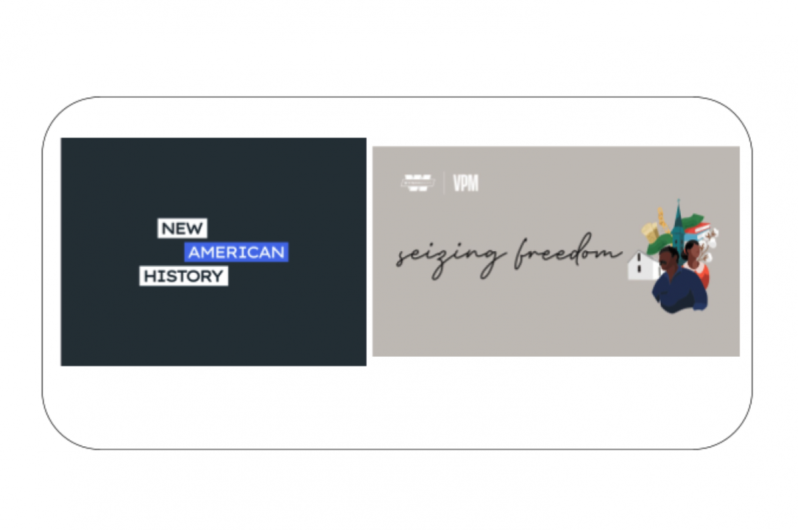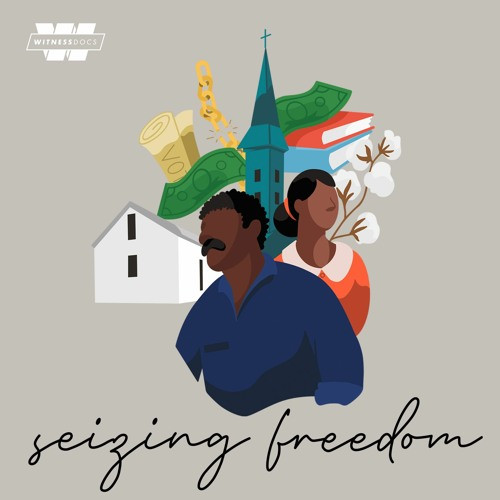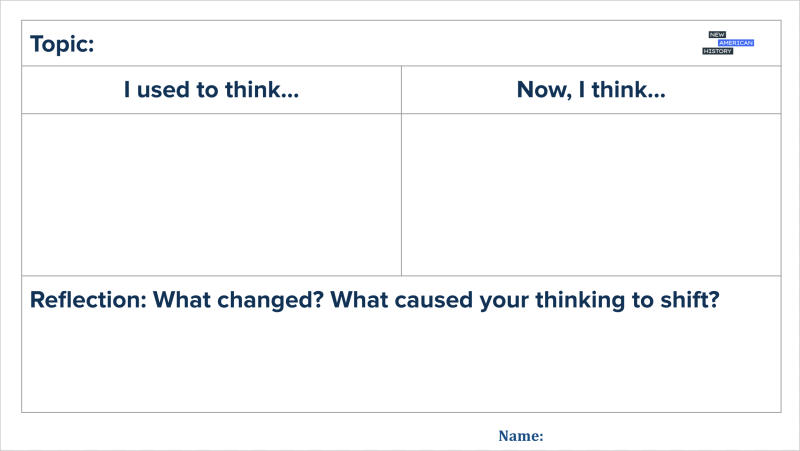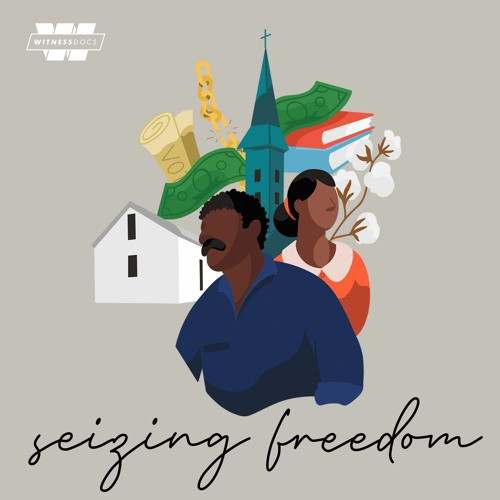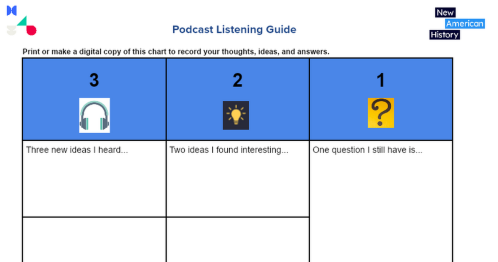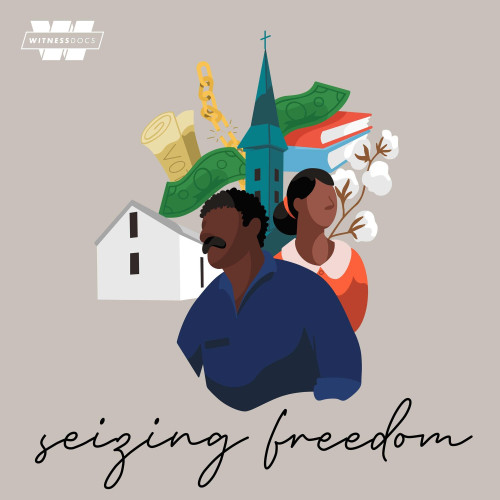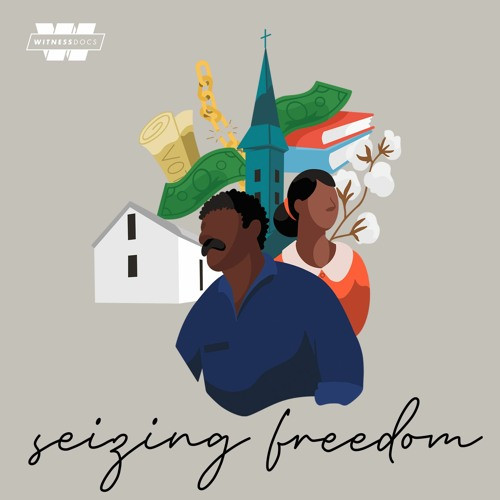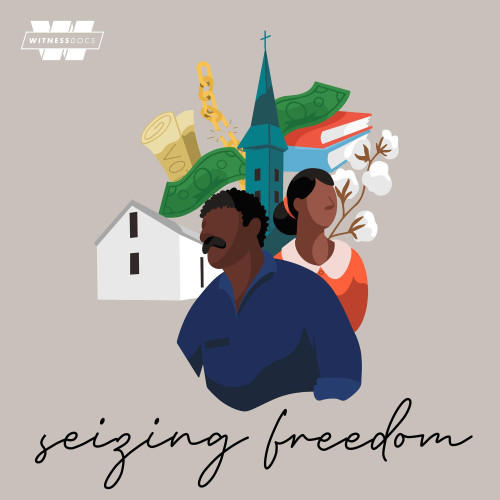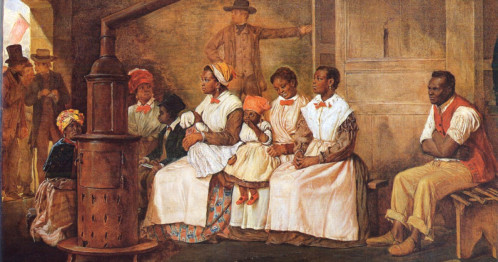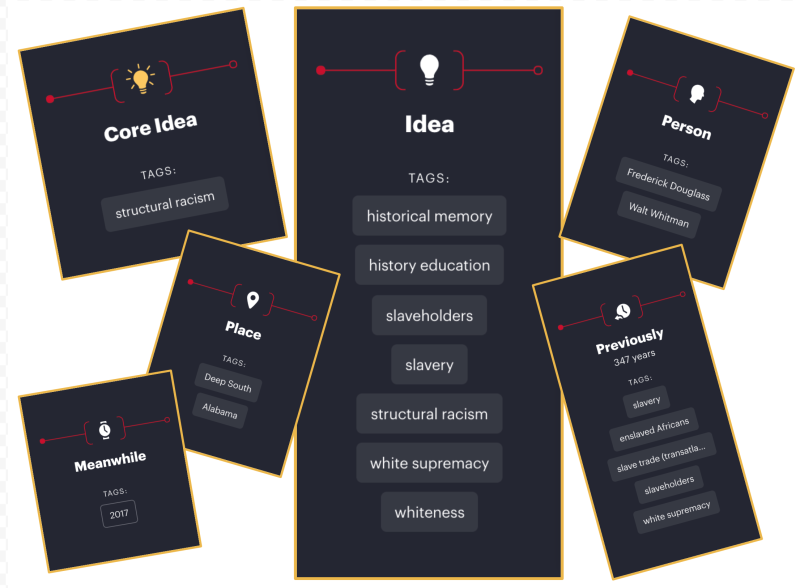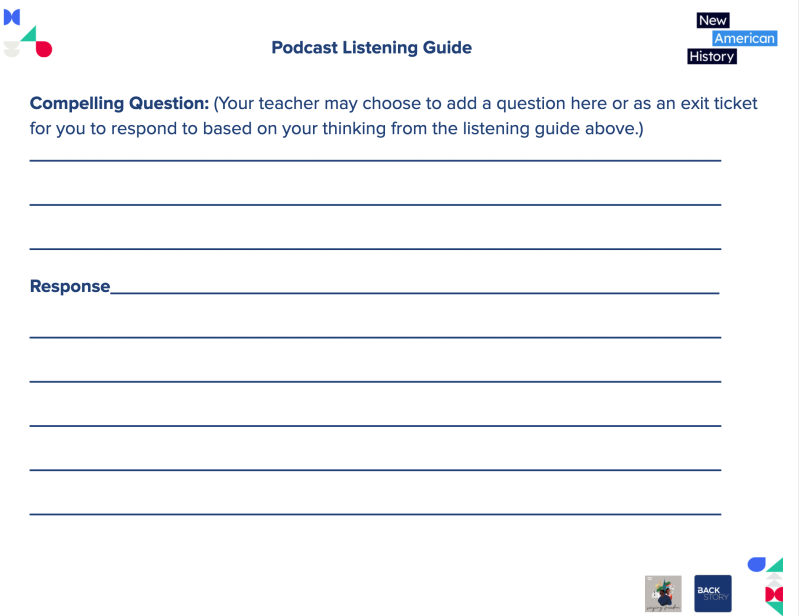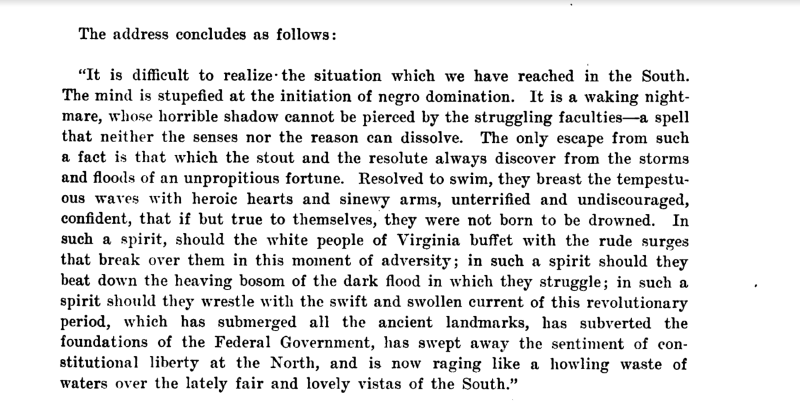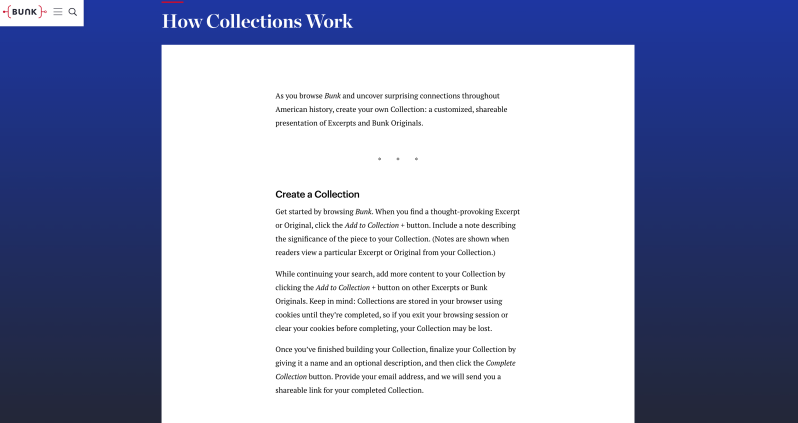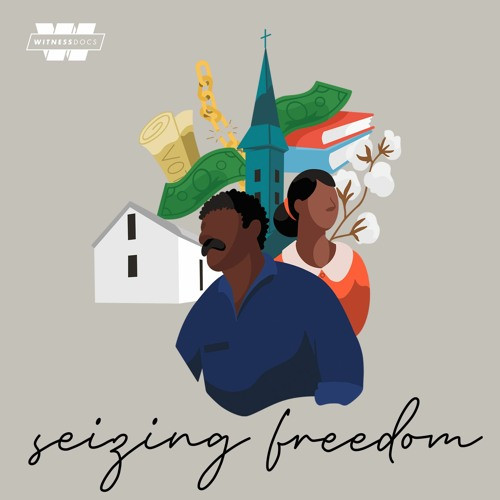This work by New American History is licensed under a Attribution-NonCommercial-ShareAlike 4.0 (CC BY-NC-SA 4.0) International License. Permissions beyond the scope of this license may be available at newamericanhistory.org.
Seizing Freedom: Truth Makes the Free Man
View Student Version
Standards
C3 Framework:D2.Civ.4.9-12. Explain how the U.S. Constitution establishes a system of government that has powers, responsibilities, and limits that have changed over time and that are still contestedD2.Civ.10.9-12. Analyze the impact and the appropriate roles of personal interests and perspectives on the application of civic virtues, democratic principles, constitutional rights, and human rights.D2.Civ.3.6-8. Examine the origins, purposes, and impact of constitutions, laws, treaties, and international agreements.D2.His.1.6-8. Analyze connections among events and developments in broader historical contexts.D2.His.16.6-8. Organize applicable evidence into a coherent argument about the past.
National Council for Social Studies:Theme 5: Individuals, Groups, and InstitutionsTheme 6: Power, Authority, and Governance
National Geography Standards: Standard 17: How to apply geography to interpret the past
Key Vocabulary
Abolitionist - a person who advocated or supported ending the institution of slavery in the U.S (before and during the American Civil War)
Apparate - supernatural ability to move one’s body or spirit (ex. a ghost), the power to appear/ disappear
Arcane - not well known, mysterious, secret
Barracks - military housing, similar to a college dorm for soldiers
Bootblacked - to work shining shoes or boots for a living
Contraband - items illegal to trade, own, or import/export; during the American Civil War, a term for an enslaved Black person who came under protection from the Union army
Bosom - related to a person’s upper chest area of the body
Chafe - to make sore by rubbing, to irritate, to make sore or blister
Conformity - to be obedient, follow the rules without question, or not challenge authority
Discrimination - the unfair treatment of people based on their race, gender, age, etc.
Domestic - related to the home, or one’s own country; a hired or enslaved household servant
Emancipation - to set free legally
Enrapt - fascinated, hooked, alert, very interested
Freedman/freedperson - a person who has been set free from being enslaved
Gallant - brave, heroic, noble (also chivalrous, such as a knight or gallant warrior)
Hobgoblin - a magical creature who plays tricks/gets into mischief, such as an elf or troll
Insurrectionist - a person who rebels or revolts against civic authority or an established government
Leveraged - power or ability to act or to influence people, events, decisions
Mangled - injure severely, disfigured, or mutilated by cutting, slashing, or crushing
Mission school - a school run by missionaries, or religious volunteers (missionaries) such as teachers, nuns, or other religious leaders
Pedagogy - methods used in teaching, instructional strategies
Piazza - an open square or public place in a city or town, especially in Italy
Primer - an elementary book for teaching children to read
Proprieties - following the rules, manners of socially acceptable behavior, conforming to an established way of life or behavior
Reconstruction - the period after the Civil War, from about 1863-1877, when the federal government passed civil rights legislation and attempted to transform the Southern states as they returned to the Union
Segregation - the practice of race-based separation in public spaces including schools, public transportation, restroom facilities, and neighborhoods; many communities in the United States were segregated for centuries, and while the Civil Rights Movement of the 1960s removed many legal barriers, some are still socially segregated.
Seizing - taking something by force
Sorcery - to practice magic or cast spells; magicians, spirits, or witches with magical powers
Toiled - worked hard for a long time
Transmission - to move from one place to another, to communicate an idea or teach/demonstrate a skill as part of the learning process
Tyrant - a leader or ruler in a position of power who leads unfairly/unjustly or in their own best interest
Worldview - point of view, position, way of thinking
Teacher Tip: Think about what students should be able to KNOW, UNDERSTAND and DO at the conclusion of this learning experience. A brief exit pass or other formative assessment may be used to assess student understandings. Setting specific learning targets for the appropriate grade level and content area will increase student success.
Suggested Grade Levels: Middle School / High School (6-12)
Suggested Timeframe: 2-3 90 minute class blocks
Suggested Materials: Internet access via laptop, tablet, or mobile device
Read for Understanding
Teacher Tips:
This Learning Resource includes language in the body of the text to help adapt to a variety of educational settings, including remote learning environments, face-to-face instruction, and blended learning. If you are teaching remotely, consider using videoconferencing and collaborative tools such as Google Docs or Slides to provide opportunities for students to work in partners or small groups. Digital tools such as Google Docs and Google Slides may also be used for collaboration. Rewordify helps make a complex text more accessible for those reading at a lower Lexile level while still providing a greater depth of knowledge.
This Learning Resource was developed in collaboration with VPM/Witness Docs from Stitcher, co-producers of the Seizing Freedom podcast. Instructional strategies include a 321 graphic organizer, a visual note-taking strategy known as SketchNotes/Sketchquotes, and Project Zero instructional strategies such as “I Used to Think.” As with most of our Learning Resources, we embed opportunities for students to Take Action such as creating a podcast, curating and annotating their own collections on Bunk, or sharing their work (safely, and with permission from a teacher or trusted adult) via a student-created podcast or social media post. Our guide to using podcasts in the classroom may be helpful. We also encourage other civic engagement and place-based learning opportunities such as starting a Little Free Library and working with museums, libraries, and local archives.
Some elements of the audio portions of this Learning Resource may be difficult for students, particularly students of color, to hear aloud. Some may prefer to listen and respond independently. Knowing your students well and establishing strong trusting relationships is key to teaching about topics involving violence and oppression such as forced migration, racial injustice, and lynching. Some ways to help all students feel comfortable in an instructional setting where racial oppression and violence are being discussed may include:
- Helping them make the connections between the progress being made by Black Americans and the reactions by white supremacists and authority figures to impede that progress (i.e.: Black Codes, the rise of the Ku Klux Klan, landmark Supreme Court decisions including the United States v. Cruikshank, or Plessy v. Ferguson.)
- Where appropriate, use narratives, primary sources, and audio rather than graphic images.
- Identify and correct any student misconceptions during class discussions or submitted work.
- Include the names of individuals on both the side of progress (i.e.: Alexander Clark, Sr., and Susie King) or obstruction (i.e.: David Smith, and George White).
For Students:
Although we have all been taught to read and write, many Americans were historically not able to do either. Why might education be so important to freedom, democracy and citizenship generally? How was education divided racially in earlier American history? This lesson looks at these questions, particularly in the 19th century.
Engage:
How has literacy been used to secure freedom in both the past and the present?
By the time we get to the age of nine or ten, we don’t really think about how many times a day we rely on reading to help us with the most basic tasks, like reading labels on our favorite cereal boxes, or street signs while riding a bike. Literacy, or the ability to read, is a skill we develop over time. For many, it starts with learning our ABCs or having a story read aloud to us. For others, it begins on that first day of school in Kindergarten. But in history, the ability to read and write has not always been a right or freely allowed. Seizing Freedom, a podcast from our friends at VPM explores the voices of Black Americans who risked their lives to fight for their own visions of what freedom could be — the personal history of the struggle to define freedom after 400 years of slavery, including the right to learn to read. (Listen to Seizing Freedom, “Truth Makes the Man Free,” segment 1.)
“A man who has learning can always find friends and get along very well in the world without having to work hard. But if you don’t got any learning, you’ll have to work hard for a poor living all your days.”
- Take a few minutes to think about Tommy Jones’ lived experiences as an enslaved child navigating the legal and human barriers to literacy -how did he overcome these barriers?
- Read the quote from John Dixon about learning. Do you agree/disagree? Explain your thoughts on this topic.
- What sacrifices did he make to achieve his goal of learning to read?
- What barriers still exist for children today in terms of access to literacy instruction, reading materials, and opportunities for a high-quality education?
This interactive map helps us visualize the places mentioned in this episode, and others, of Seizing Freedom. On the left side of the map, you will see the title of each episode with a list of locations included in that episode below each title. Take a few minutes to explore the map.
- What do you notice?
- Do you see any patterns on the map?
- What surprised you most about the map?
Now deselect (uncheck the boxes) beside all of the episode names except for “Truth Makes The Free Man.” You should now view only the locations on the map mentioned in this episode.
- What changes do you notice on the map?
- Take a few minutes to explore the locations on the map from this episode.
- As you click on each dot on the map, what new information do you see?
Select number 1 on the map, and read more about Tommy Jones.
Now take a few minutes to listen to Seizing Freedom, “Truth Makes the Man Free,” Segment 2, and learn about Mattie Jackson and John Sella Martin’s experiences as enslaved children negotiating for the right to learn to read and write despite barrier laws and prejudices. View number 2 on the map to see where John used a common love of gaming to negotiate a way to learn the alphabet.
Complete the following statements based on your own thoughts about education and the podcast segments you heard. Your teacher may provide you with this template using Google Docs or record your answers as directed by your teacher.
Your teacher may ask you to record your answers on an exit ticket.
Explore:
In what ways were barriers to literacy weaponized, and how did the decriminalization of literacy expand the rights of emancipated Black Americans?
Today some students take for granted that they not only have access to a free public education but also to books in both school and public libraries, community-based Little Libraries, and digital eBooks. Historically, learning to read and write, attending school, and access to published materials such as books and newspapers, was often based on race, income level, and in some cases, geography. (Listen to Seizing Freedom, “Truth Makes the Man Free,” segment 3.)
As you listen, follow along using this 321 graphic organizer from our New American History Podcast Listening Guide.
You may also visit this interactive map to learn more about the people and places mentioned in the podcast. Deselect other episodes except for this one. Select numbers 3, 4, and 5 to read more about Margaret Adams, Susie King Taylor, and D. Webster Davis.
Turn and talk to a partner about what you heard, or if working remotely, your teacher may allow you to share via video conferencing in breakout rooms or by sharing as a collaborative document. Compare and contrast the ideas you both found most interesting in the segment you listened to and share your questions.
Where might you and your partner research to find more information or the answers to your questions? Your school media specialist or local public librarian may be able to help.
You might consider contacting the archivist at a local historical society or explore a museum website. We like the American Civil War Museum and its digital resources.
Consider starting your own Little Free Library in your community, and fill it with books you believe tell the true and complete stories of American history. 📚
Your school media specialist may help you fund it with a Donors Choose project.
Your teacher may ask you to record your answers on an exit ticket.
Explain:
In what ways is education the key to real freedom?
During the American Civil War, enslaved African Americans who could escape sought refuge and freedom in contraband camps such as Ft. Monroe in Hampton, Virginia. It was here where some encountered their first experiences with education and literacy. In the post-Civil War era, America entered into a period known as Reconstruction, and newly free Black Americans of all ages sought to get an education by any means possible. This did not always look the same in all communities, and barriers still existed as new ones were constantly added to deter freedmen and freedpersons from their basic rights as citizens, including access to education. (Listen to Seizing Freedom, “Truth Makes the Man Free,” segment 4.)
As you listen, you may want to follow along on this interactive map to learn more about the people and places mentioned in the podcast. Deselect other episodes except for this one. Select number 6 on the map to read more about education as reported in The Nationalist, a Black newspaper.
You may also follow along using this New American History Podcast Listening Guide. Try using a visual notetaking strategy, Sketchnotes/SketchQuotes, to illustrate the ideas and key terms you hear about education in the podcast. You may want to use a powerful quote from the podcast.
“The sword may make the freedman, but only the truth makes the free man.”
This could be used to create a SketchQuote.
- What evidence do you hear about conformity v. self-expression
- In what ways did white teachers sent to a mission school or contraband camp help or harm their young Black students?
As more white teachers were sent by mission schools to teach Black children in the South, Black parents like Margaret Adams fought for the right to have a say about who taught their children. (Listen to Seizing Freedom, “Truth Makes the Man Free,” segment 5.)
You may continue to follow along on the interactive map by selecting numbers 7 and 8.
- What spatial patterns do you see in the locations mentioned in this episode
- How do the text boxes linked to the map add to your understanding of the audio segments?
Bunk is a website connecting themes in American history across space and time. Take a moment to explore this Bunk Connection. Read both excerpts, and explore the tags both have in common.
- As you explored Bunk, did you make any connections to the podcast you heard earlier?
- If you were adding this podcast into Bunk, what tags might you use to connect the podcast to one or both of these excerpts?
Explain how you see these tags connected to the podcast content. You may use the New American History Podcast Listening Guide to record your thoughts.
Your teacher may ask you to submit your Sketchnotes/SketchQuotes or record your answers to the Bunk Connections on an exit ticket.
Elaborate:
How did Black teachers and “normal” schools overcome lack of funding and threats of racial terror from white supremacists to meet the needs of children in the South?
Educators from Black communities often faced financial obstacles and personal attacks on themselves and their students as they formed, funded, and staffed schools in support of providing an education for their children. (Listen to Seizing Freedom, “Truth Makes the Man Free,” segment 6.)
As you listen, you may follow along on the interactive map, selecting numbers 9, 10 and 11. If time permits, you may also listen to this "Seizing Freedom “extra” to learn more about Susie King Taylor's story.
Take some time to study this excerpt of the April 20, 1868 closing Address (speech) to the Virginia State Constitutional Convention, as reported in the Richmond Times Dispatch newspaper. (Warning: This excerpt contains language which may be difficult for some readers to view as they relate to racist beliefs of some white southerners from the time period. Use your best judgement as you proceed.)
Take some time to analyze the specific language used in the Address to describe the supposed threat of “negro domination.” Fear tactics and the desire to hold on to the white dominance narrative were not new to those attending the convention, or to those reading about the convention in the local newspaper. A Bunk search indicates there are hundreds of articles written over multiple decades about white supremacist views and tactics. These fears on the part of those in power were not limited to fear of Black education or educators, but also fear of Black voting rights, property and business ownership, and marriage equality. Explore this topic more by creating your own Bunk Collection. You may select 3-5 excerpts to curate and annotate, describing how the excerpts you read related to the content you heard in the Seizing Freedom podcast, or other learning experiences or personal experiences you have had. Your teacher may also choose to share a collection as a Bunk Assignment for you to read and respond to a series of questions about related content in Bunk, depending on your school’s Fair Use policies for accessing technology.
Your teacher may ask you to submit a link to your Bunk Collection or Assignment as an exit ticket.
Extend:
How did the fight for educational opportunities for all children extend beyond the borders of the “Deep South,” and at what cost?
Black families in the south were not the only ones who had to fight for the rights of their children to receive an education in the Reconstruction era. The Clarks of Iowa were amongst the first to challenge the segregationist policies of the era in the midwest, and they would not be the last. (Listen to Seizing Freedom, “Truth Makes the Man Free,” segment 7.)
People often think of the Civil Rights Movement of the 1960s as the era of school desegregation, but the 1868 Iowa State Supreme Court ruling in the Clark v. Board of Directors case was 86 years before the landmark Brown v. Board decision, which integrated all public schools across the nation. As it turns out, this was not the only significant ruling by the Iowa courts. Take a few minutes to explore the Clark case and other Civil Rights landmark cases on this interactive timeline.
Now it is YOUR turn to create a history-themed podcast. Using the content you read on Bunk and the audio segments you listened to from Seizing Freedom, work in pairs or small groups as your teacher directs you and record a short audio clip connecting the stories of Black Americans who fought for better education and equal rights during the Reconstruction era to an issue today around equity in your school or community. If working remotely, your teacher may provide an opportunity for your to work together via videoconferencing in breakout rooms, or through a collaborative space such as Google Slides or Google Docs. You will want to prepare a script, use reliable sources such as those shared in this Learning Resource, or others your school media specialist or public librarian might help you locate. This DIY Guide may be helpful!
Your teacher may ask you to record your answers on an exit ticket.
If your town has a local history museum or historical society, they may have an archivist who might assist you, too. Your grandparents or other family members or neighbors may know stories of their own efforts or the efforts of others to promote fair and equitable systems and policies in your community. This is your chance to bring those stories into the public square.
We’d love to hear your podcast, too! If your teacher or a trusted adult permits, you might upload it as an MP3 and share it via social media (links on our pages). You can tag us or email us a link at editor@newamericanhistory.org!
Citations:
Brenamen, J.N. ed. 1867-68 State Convention: A History of Virginia Conventions, page 73-4.Bunk History. New American History, 2021. https://www.bunkhistory.org/.
Chin, Teresa. “DIY: How To Make A Podcast.” DIY-YR Media. YR Media, October 8, 2018. https://yr.media/diy/diy-toolkit-how-to-make-a-podcast/.
“Clark Decision: Celebrating 150 Years of Iowa School Desegregation: Iowa Courts Civil Rights Timeline.” LibGuides. Drake Law, March 11, 2021. https://libguides.law.drake.edu/Clark150/Timeline.
“Education of the Freedmen .” The Nationalist. March 29, 1866, sec. 2.
“I Used to Think...Now I Think.” Project Zero. Harvard Graduate School of Education, 2019. https://pz.harvard.edu/sites/default/files/I%20Used%20to%20Think%20-%20Now%20I%20Think_1.pdf.
Little Free Library, 2009. https://littlefreelibrary.org/.
Pillars, Wendi. Twitter, 2020. https://twitter.com/wendi322/status/1269050266814500871/photo/1.
“Seizing Freedom.” Seizing Freedom podcast. VPM, 2021. https://www.seizingfreedom.com/.
"The Future Of America's Past: Freedom's Fortress." 2019. TV program. Field Studio. VPM: Virginia Public Media. https://futureofamericaspast.com.View this Learning Resource as a Google Doc


